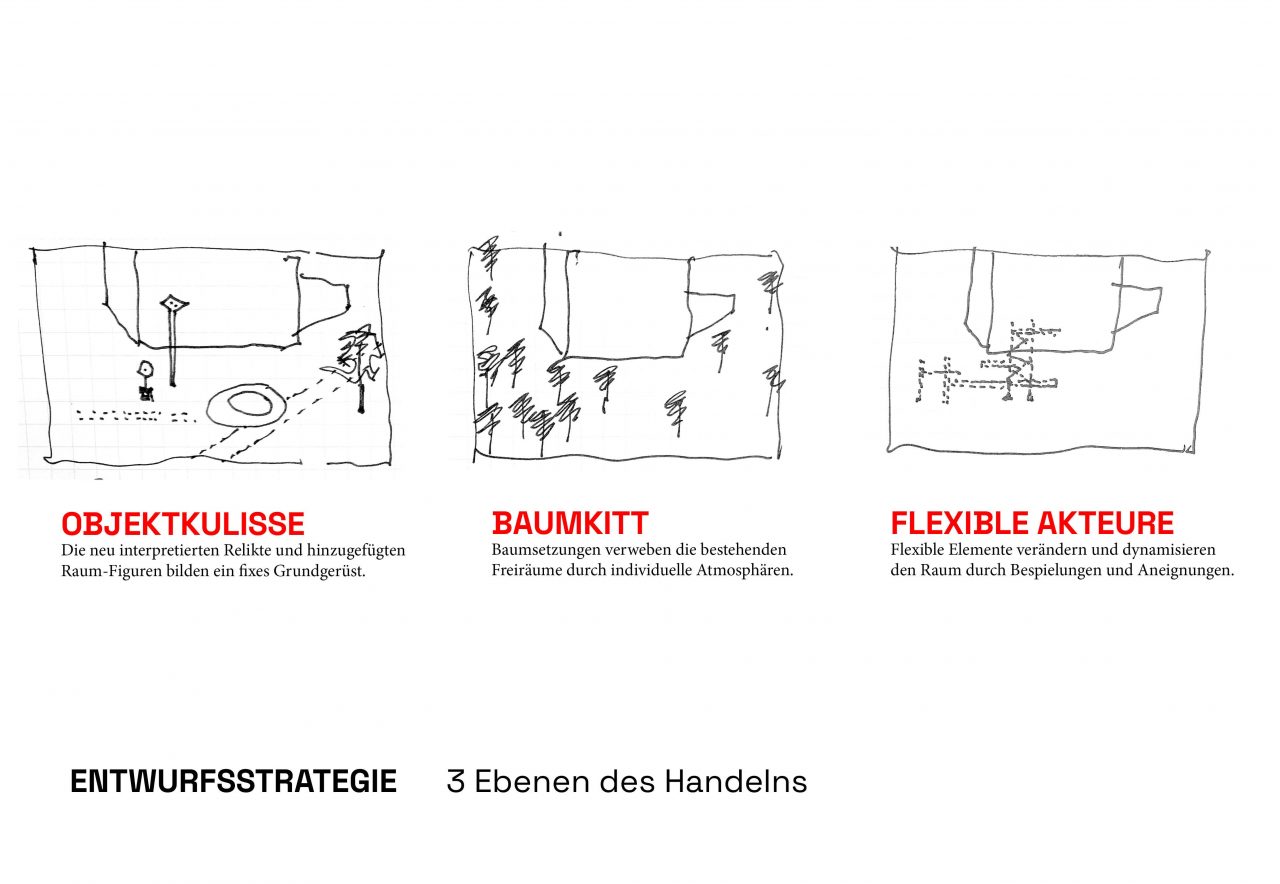City as Stage
The project is located on a site composed of the oversized, desolate, and representational forecourts of three former GDR government buildings: the Haus der Statistik, the Haus des Reisens, and the Haus der Gesundheit. Situated adjacent to the iconic Alexanderplatz and the vast traffic intersection of Karl-Marx-Allee, Alexanderstraße, and Otto-Braun-Straße—shaped by the ideals of socialist urbanism—the site is embedded in the layered history of Berlin-Mitte. Over the course of some 250 years, this area has been the stage for significant moments in the city’s rich and at times spectacular urban narrative. Some of these traces remain visible today, others lie buried beneath the asphalt surface, while still others persist only in the memories of residents or the pages of history books.
The design of the Stadtbühne project reinterprets these historical moments, layering them with the contemporary needs of the site’s diverse users.
Two guiding intentions form the foundation of the design. On one hand, the project aims to create—through temporary means—a new place of identity within Berlin-Mitte: a constellation of high-quality, lively urban spaces. On the other hand, these new spaces are conceived to be appropriated by a wide range of actors and interest groups for their own uses. They act as projection surfaces for the imaginations, desires, and needs of the site’s many users.
To animate the site, fifteen objects of unfolding have been developed, each rooted in and reinterpreting aspects of the site’s history. Each object functions, in its own way, as a stage or a grandstand, operating in synergy with the others. Together, they provide spatial and symbolic infrastructure for the varied—and often subcultural—activities of those engaged with the Haus der Statistik, as well as for local residents and visitors.
The Haus der Statistik itself is an internationally recognized building and site whose reactivation since 2018 has evolved as a cooperative process of urban development involving multiple civic groups and user communities. Its history is remarkable: from its sale by the city of Berlin to private investors, to its illegal occupation by artists demanding affordable housing and cultural space, and finally to its renovation and reprogramming through participatory processes.
AS A THRESHOLD IN THE URBAN FABRIC
From the construction of the Königstor and St. George’s Church in 1780, through the city wall, tram lines, and the Karl-Marx-Allee, up to the present day, the site forms an interface of overlapping spatial and temporal layers within Berlin’s urban map.
WITHIN THE OPEN-SPACE SYSTEM AND AS A HIERARCHY OF SQUARES
The spaces are understood as part of a larger open-space network — as heads and sequences along Karl-Marx-Allee, as interfaces and stepping stones extending into the wider urban landscape and the surrounding neighborhood structures.
FRAGMENTATION OF THE URBAN GROUND
Traffic infrastructure cuts through the site, creating fragments disconnected from one another. A continuation of the existing tree alignments could serve as the binding agent — the connective tissue that holds everything together.
THROUGH TREES AS AN EXPRESSION OF URBAN FORM
The existing tree structures express the urban development history of the surrounding context. They embrace the forecourt of the Haus der Statistik, seemingly advancing toward it, emphasizing its presence through emptiness.
AS A DIALOGUE BETWEEN EXTERNAL AND INTERNAL
The site engages simultaneously with the inner and outer worlds — relating both to significant urban spaces and to the internal realms of the Haus der Statistik. Can this space open a dialogue between urban form and human presence?
THROUGH OBJECTS AS FRAGMENTS OF HISTORY
Remaining as well as concealed objects evoke associations and memories, serving as catalysts for our collective imagination — linking past, present, and future.
